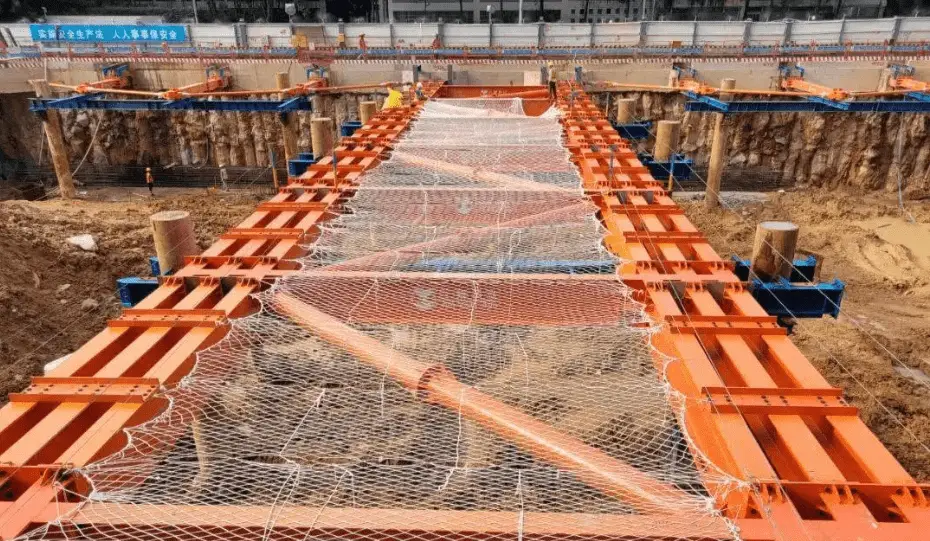Superior Structural Integrity for Modern Warehouses
Wide Clear Span Designs Maximize Usable Space
Wide clear span designs in steel construction create expansive, unobstructed interiors, facilitating versatile usage ideal for both storage and manufacturing. These designs eliminate the need for interior support columns, greatly enhancing operational efficiency. The resulting flexibility allows businesses to customize warehouse layouts to suit their specific requirements, without the limitations typically imposed by structural columns. Research has shown that warehouses incorporating clear span designs can benefit from up to a 30% increase in usable space, directly boosting productivity and optimizing storage capabilities.
High Strength-to-Weight Ratio Advantages
Steel's high strength-to-weight ratio is a key advantage in the construction of modern warehouses. This property enables structures to support heavy loads while using less material, thereby reducing overall construction costs. The use of thinner steel materials contributes to building lighter but still incredibly resilient structures, which optimizes resource use during construction. Furthermore, the lighter weight of these structures means they can be erected more quickly, minimizing the need for extensive foundational work and thereby saving both time and costs.
Resistance to Weather Extremes & Seismic Activity
Steel inherently possesses resistance to corrosion and deformation, making it exceptionally suitable for regions prone to extreme weather and seismic activity. Structures built with steel are proven to withstand heavy winds and earthquakes more effectively than those made with traditional materials, enhancing safety for occupants. Reports indicate that steel warehouses are remarkably resilient during seismic events, significantly decreasing the likelihood of catastrophic failures. This enhanced resilience not only ensures structural safety but also reinforces the long-term durability and integrity of warehouses.
Economic Benefits of Steel Construction
Faster Construction Timelines Reduce Labor Costs
Steel construction offers significant economic advantages, particularly in terms of faster build times. Prefabricated steel components can be rapidly assembled on-site, substantially shortening construction timelines compared to traditional building methods. This efficiency translates to decreased labor hours, effectively reducing wage expenditures. For example, owing to the streamlined process, statistics consistently show that projects employing steel construction can save approximately 20% on labor costs compared to conventional approaches. In an era where time equals money, this rapid assembly not only minimizes costs but also expedites project completion, allowing businesses to realize their investment returns sooner.

Long-Term Cost Savings Through Minimal Maintenance
One of the strongest economic arguments for choosing steel construction is the long-term cost savings through reduced maintenance needs. Unlike wood or concrete, which are susceptible to deterioration such as rotting or cracking, steel's durability significantly lessens the need for ongoing repairs and replacements. This durability translates to lower lifecycle costs, making steel structures a financially sound choice over time. Studies support this, revealing that steel buildings can experience maintenance cost reductions of nearly 50% over a 30-year period compared to their traditional counterparts. This ensures that the initial investment in steel pays dividends through sustained performance and minimal upkeep.
Scalability for Business Growth & Relocation
Steel construction provides unmatched flexibility for businesses looking to scale or relocate. Its inherent structural adaptability allows easy expansion or modification of existing buildings without the need for complete reconstruction. This capability supports business agility, enabling companies to respond swiftly to market changes. Statistics indicate that steel-fabricated facilities can adjust to accommodate a 30% increase in operational space with minimal disruption. This scalability is crucial for businesses in dynamic sectors where growth and change are constant, positioning steel as a prime choice for future-proofing corporate infrastructures.
Enhanced Safety Features in Steel Warehouses
Inherent Fire Resistance Properties
Steel is a non-combustible material, which means one of its inherent properties is exceptional fire resistance. This ability to withstand fire is crucial in protecting valuable assets and ensuring the safety of employees within warehouses. According to research, steel structures suffer less damage in fire incidents compared to wooden buildings, enhancing the overall structural integrity during such events. Additionally, the fire resistance characteristic of steel can lead to lower insurance premiums, as insurers often offer better rates due to the reduced risk profile associated with steel constructions.
Code-Compliant Designs for Heavy Equipment Loads
Designing steel warehouses to comply with stringent codes for heavy equipment loads offers significant safety benefits. These buildings can safely support the necessary weight, minimizing risks of structural failure during operations. The compliance with industrial safety standards ensures that facilities meet necessary safety regulations, thereby reducing workplace injuries associated with equipment malfunctions. Regulatory statistics further bolster this fact, showing a marked improvement in safety records in steel-structured environments operating with heavy machinery. Therefore, steel construction not only meets but often exceeds the safety standards expected in modern warehouses.
Corrosion-Resistant Materials for Longevity
Steel warehouses utilize advanced coatings and treatments to enhance their resistance to corrosion, which significantly extends their lifespan. By mitigating corrosion, steel constructions offer businesses increased structural safety and reliability over time. Industry standards indicate that corrosion-resistant materials can prolong the lifespan of steel frameworks by 25% or more. This added durability means less frequent repairs and maintenance, translating into long-term cost savings. The longevity of these materials ensures that businesses can rely on their infrastructure to safely support operations, reducing the worry of structural integrity issues over time.
Sustainability & Environmental Advantages
100% Recyclable Material Reduces Waste
Steel stands out as a sustainable choice in construction due to its 100% recyclability, significantly reducing environmental waste. The capacity of steel for recycling supports a circular economy, as materials can be reused in new projects with minimal ecological impact. According to the World Steel Association, approximately 90% of steel is recycled, underscoring its sustainability credentials. This widespread recycling practice benefits not only the environment but also construction sectors aiming to enhance eco-efficiency.
Energy-Efficient Insulation Options
One of the key advantages of steel constructions is their ability to facilitate superior thermal insulation, minimizing energy costs and maximizing comfort within warehouses. Incorporating energy-efficient systems in steel buildings can lead to lower utility costs, thus enhancing their economic value. Analytical data suggest that businesses can achieve annual energy savings of 20% to 30% due to effective insulation in steel structures. This makes steel buildings a compelling choice for those looking to boost both sustainability and cost-efficiency.
Eco-Friendly Manufacturing Processes
Modern steel manufacturing has evolved to prioritize eco-friendly practices, reducing carbon emissions and minimizing waste. These sustainable practices not only enhance the environmental image of companies investing in steel construction but also contribute to broader global efforts to combat climate change. Research indicates that innovations in steel production can cut energy consumption by up to 50%, highlighting the industry’s shift towards more sustainable manufacturing processes. Such advancements further solidify steel's role in supporting environmentally conscious business strategies.
Future-Proof Design Flexibility
Customizable Layouts for Automation Integration
Steel construction excels in offering highly customizable layouts, making them an ideal choice for logistics and manufacturing sectors integrating automation technologies. By adapting the structure to specific automation needs, businesses can enhance operational efficiency significantly. A notable case study revealed that facilities designed for automation within steel frameworks reported a 40% increase in operational efficiency. Such flexibility in design is instrumental in optimizing workflows and adapting to industry-specific requirements, providing companies with unparalleled advantages in terms of productivity and efficiency.
Easy Expansion Capabilities
The modular design of steel structures provides streamlined expansion capabilities, empowering businesses to grow without major disruptions. This adaptability ensures that structural integrity and aesthetic appeal are preserved even as additions are made. Expansion flexibility is crucial, as evidenced by business growth projections that show over 60% of companies prioritize this when choosing building materials. Steel's inherent modularity allows for seamless integration, enabling companies to swiftly respond to changing market demands and enhance their facilities efficiently.
Adaptable to Changing Industry Standards
Steel construction offers adaptability to changing industry standards and codes, which is vital for ensuring regulatory compliance over the long term. This flexibility allows businesses to maintain current facilities without undergoing extensive renovations, thereby minimizing downtime and enhancing productivity. Research highlights that materials providing compliance flexibility can significantly boost company productivity by reducing operational disruptions due to regulatory changes. As industry standards evolve, steel's adaptive qualities ensure sustained operational viability and foster a proactive approach to meeting compliance requirements.
Steel vs Traditional Building Materials
Durability Comparison: Steel vs Wood Framing
Steel offers unmatched durability compared to wood framing, as it is resistant to rot, pests, and extreme weather conditions. This robustness translates into reduced repair costs and longer lifespans for steel structures versus traditional wooden ones. For instance, architectural studies confirm that steel constructions can outlast wood by 30% or more, making a compelling case for choosing steel when durability is a primary concern.
Lifecycle Cost Analysis
Lifecycle cost analysis reveals that while steel structures may require higher initial investments, they offer significant savings over time due to exceptional durability and reduced maintenance needs. These structures boast better resale values and higher appreciation rates, providing superior long-term investment returns. Financial reports underscore this claim, suggesting a total lifecycle savings of up to 40% for owners of steel structures compared to those using traditional materials.
Operational Efficiency Advantages
Steel’s versatile design capabilities contribute significantly to operational efficiency, especially in warehouses, improving workflow and increasing productivity. The open layouts facilitated by steel construction enhance movement and accessibility, crucial for modern business operations. Statistics indicate that companies that utilize steel reported an average productivity increase of 25%, driven by operational efficiency improvements, highlighting the material's potential to boost business performance effectively.
FAQ
What is a clear span design in steel warehouses?
A clear span design in steel warehouses refers to construction that eliminates interior support columns, creating an open and unobstructed space, which can enhance efficiency and maximize usable area.
How does steel's high strength-to-weight ratio benefit warehouse construction?
Steel's high strength-to-weight ratio allows warehouses to support heavy loads while using less material, reducing overall construction costs and speeding up the erection process.
What are the economic benefits of constructing warehouses with steel?
The economic benefits include faster build times, reduced labor costs, minimal maintenance needs leading to long-term savings, and scalability to accommodate business growth.
Why is steel considered a sustainable choice for construction?
Steel is considered sustainable because it is 100% recyclable, offers energy-efficient insulation options, and is manufactured through eco-friendly processes that reduce carbon emissions.
How does steel construction support automation in warehouses?
Steel construction offers highly customizable layouts that can be adapted to specific automation needs, enhancing operational efficiency and productivity.






